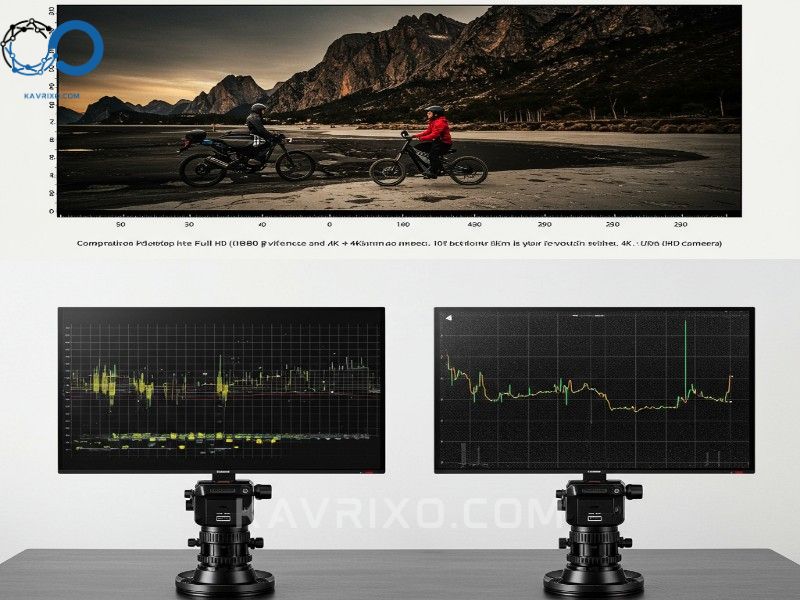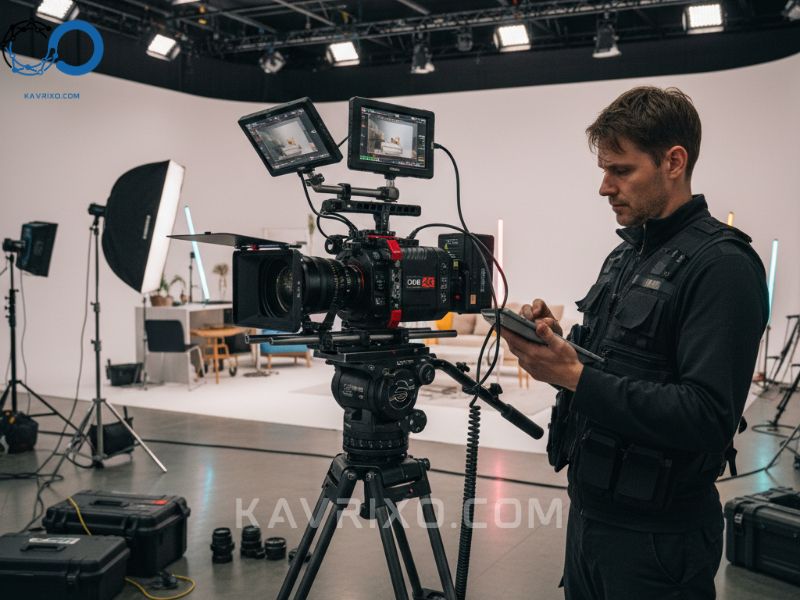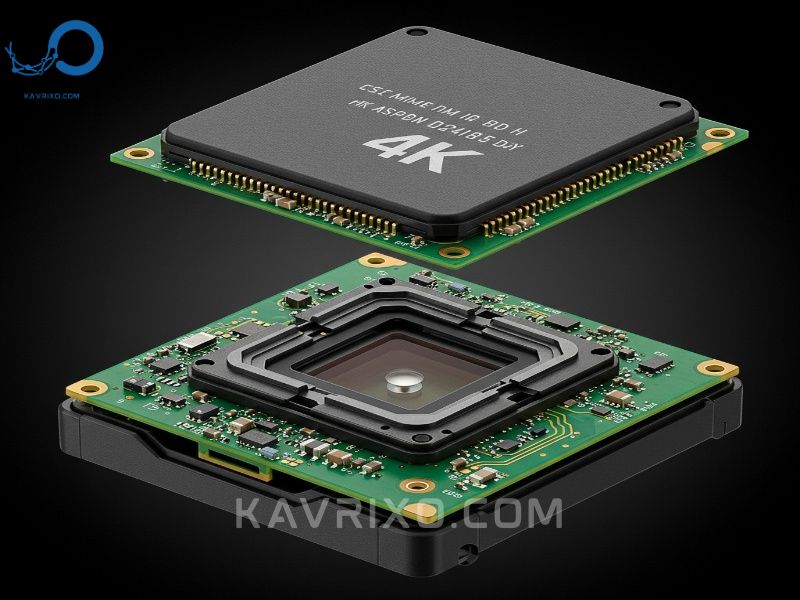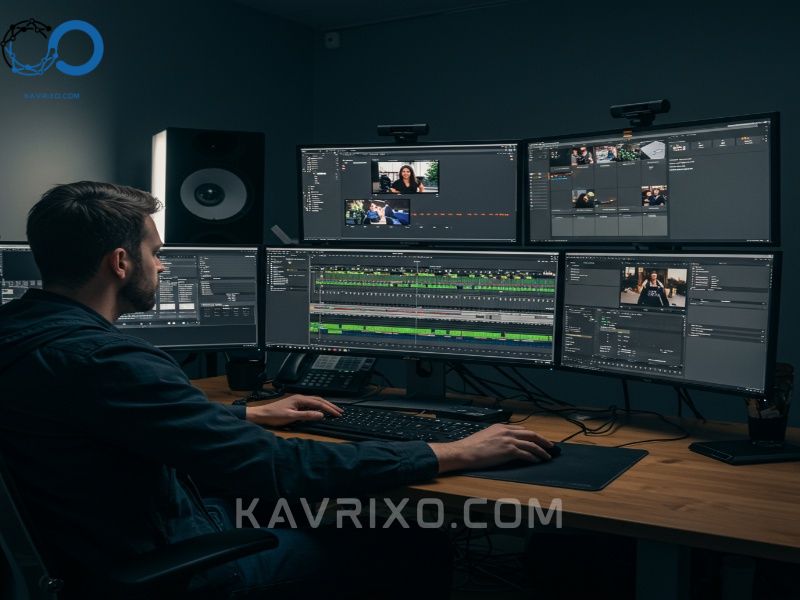In the modern digital landscape, visual quality is paramount. Whether you are producing a feature film, creating engaging social media content, or simply ensuring the security of your property, the resolution of your captured image dictates its impact and utility. For years, 1080p (Full HD) was the standard bearer, but today, the 4k high definition camera has utterly redefined visual fidelity, making it the new baseline for quality across nearly every industry.
Moving beyond simple marketing jargon, understanding the technology behind a true 4k quality camera is crucial for making an informed investment. This comprehensive guide explores the technical foundations of 4K, examines its diverse applications, and provides practical advice on choosing and implementing the best 4k camera for your specific needs, regardless of budget.
Contents
- 1 Understanding the Core Technology: What Exactly is 4K?
- 2 Exploring Applications: Where the Best 4k Camera Shines
- 3 Navigating the Market: Choosing the Right 4k High Definition Camera
- 4 Deep Dive into Specific Camera Categories
- 5 Cost, Value, and Accessibility: Finding the Most Affordable 4k Camera
- 6 Setting Up and Optimizing Your 4k Workflow
- 7 Conclusion: Embracing the Future of Visual Fidelity
Understanding the Core Technology: What Exactly is 4K?
The term “4K” is often used interchangeably with “Ultra High Definition” (UHD), but it represents a massive leap in data capture and visual clarity compared to older standards. Fundamentally, 4K refers to a resolution roughly four times that of standard 1080p.
Resolution vs. Pixel Count: Defining UHD
When discussing resolution, we are referring to the total number of distinct pixels captured and displayed. A standard 1080p image contains 1920 pixels horizontally by 1080 pixels vertically, totaling just over 2 million pixels.
A 4k uhd camera, however, delivers significantly more detail. While there are slight variations (DCI 4K used in cinema is 4096 x 2160, slightly wider than the standard 3840 x 2160 UHD format), the primary takeaway is the pixel density. A 3840 x 2160 image contains over 8.3 million pixels. This massive increase in available data is what gives footage captured by an ultra high definition camera its characteristic sharpness and depth.
The Jump from Full HD (1080p) to Ultra HD (4K)
The transition from HD to 4K is not merely a slight improvement; it is a fundamental shift in viewing experience. Imagine taking a single frame from a 4K video and cropping into one-quarter of that frame—that cropped section still retains 1080p resolution.
This ability to zoom, stabilize, or re-frame in post-production without losing high-definition quality is one of the most significant professional advantages offered by 4k video cameras. Furthermore, the increased pixel count allows for smoother gradients, better color representation (especially when paired with HDR technology), and a much more detailed image when viewed on large screens.
Key Benefits of a True 4k Quality Camera
Beyond the raw pixel count, modern 4K systems bring several other advantages that enhance the overall quality and usability of the footage:
- Enhanced Detail and Sharpness: This is the most obvious benefit. The fine lines, textures, and subtle details that disappear in 1080p footage are rendered clearly by the 4k high definition camera.
- Superior Color Depth: Most modern 4K systems support 10-bit or 12-bit color recording, offering billions of color variations compared to the 16 million offered by standard 8-bit systems. This is vital for professional color grading.
- Future-Proofing: As 4K displays become ubiquitous and 8K technology begins to emerge, capturing your footage in 4K ensures that your content will look crisp and relevant for many years to come.
- Better Digital Zoom and Stabilization: In applications like security or wildlife photography, the ability to digitally zoom or stabilize shaky footage in post-production while still retaining sufficient resolution is invaluable.

Read more: The Definitive Guide to Choosing a 4K Camera System for Home with NVR System
Exploring Applications: Where the Best 4k Camera Shines
The versatility of 4K technology means that it has rapidly permeated diverse sectors. The requirements for a 4k ultra camera used on a drone are radically different from those of a 4k wired security camera system, yet both leverage the power of ultra high definition camera technology.
Professional Filmmaking and Content Creation
For professional video producers, 4k video cameras are no longer a luxury but a necessity. Major streaming platforms and television networks require 4K delivery.
The advantages here extend beyond simple resolution. Modern filmmaking cameras often combine 4K resolution with high frame rates (like 4K 60fps or even 120fps for slow motion), advanced codecs (like ProRes or RAW), and high dynamic range (HDR) capabilities. These features, often found in high end video cameras 4k and higher resolution, provide filmmakers with maximum flexibility in lighting conditions and post-production manipulation. For independent filmmakers and dedicated YouTubers, investing in great 4k cameras that offer these professional features at a competitive price point can drastically elevate production value.
Consumer Photography and Vlogging
Even if the primary use is photography, the video capabilities of contemporary mirrorless and DSLR cameras are paramount. Many consumers purchasing top 4k cameras are looking for hybrid devices that can shoot stunning still images and cinematic video.
Vloggers, travelers, and hobbyists benefit significantly from 4K. The ability to grab high-resolution stills from video footage (useful for thumbnails or social media posts) or to crop tightly on an interview subject provides creative freedom that 1080p simply cannot match. When searching for a good 4k camera for personal use, ergonomics, autofocus performance, and battery life often become just as important as the raw resolution specification.

Security and Surveillance
Perhaps one of the most critical and rapidly growing applications is in security. When an incident occurs, the difference between an inconclusive, blurry image and a crystal-clear, identifiable one is the difference between failure and success.
The best 4k security camera poe (Power over Ethernet) systems provide essential detail, particularly in wide-area coverage. Because these cameras cover large fields of view (parking lots, entire building facades), the higher pixel density ensures that distant objects, such as license plates or faces, remain distinguishable.
A 4k wired security camera system is highly favored because the high bandwidth required to transmit continuous 4K footage reliably is best handled by stable wired connections, minimizing compression artifacts and latency. Furthermore, many modern systems utilize AI analytics, which function far more accurately when fed the rich data stream provided by an ultra high definition camera.
The market is saturated with devices claiming “4K” capability. However, not all 4K is created equal. Understanding the underlying specifications is essential to ensure you are truly getting a 4k quality camera that meets your expectations.
Key Technical Specifications to Consider
When evaluating different models, look past the headline resolution number and focus on the following details:
- Frame Rate (FPS): Does the camera shoot 4K at 24fps (cinematic standard), 30fps (standard video), 60fps (for smooth motion and slow-motion potential), or even higher?
- Chroma Subsampling: Professional cameras often record in 4:2:2 or 4:4:4 color space, which retains more color information than the consumer standard 4:2:0. While both are 4K, the professional format provides better color flexibility.
- Bitrate: Measured in Mbps (megabits per second), bitrate dictates how much data the camera captures per second. Higher bitrates (e.g., 100 Mbps or more) generally mean less compression and higher quality.
Sensor Size and Image Processing
The sensor is the heart of the 4k high definition camera. While resolution is important, the physical size of the sensor (Full Frame, APS-C, Micro Four Thirds, or smaller security sensors) plays a critical role in image quality, especially in low light.
Larger sensors generally have better light-gathering capabilities, leading to superior dynamic range (the difference between the darkest and lightest parts of the image) and lower noise levels, even when capturing 8.3 million pixels. When comparing different camara 4k options, always check the sensor size relative to the lens mount and the camera body size.

Understanding Compression and Bitrate
For practical reasons, the massive amounts of data generated by a 4k uhd camera must be compressed. The method and degree of compression significantly affect the final image quality and the difficulty of post-production.
For example, some entry-level most affordable 4k camera options use heavy compression (H.264), which saves file space but can introduce artifacts in complex scenes. Mid-range and professional cameras use more efficient or less destructive codecs (like H.265 or internal RAW formats) that preserve more detail, making post-production grading easier but requiring significantly more storage.
The Role of Lenses in Achieving True 4K Resolution
A common mistake is pairing a high-quality 4K body with a poor-quality lens. A lens that is not sharp enough cannot resolve the fine details required by the sensor, resulting in footage that looks soft, even if it was technically shot at 4K resolution.
To get the most out of your ultra high definition camera, prioritize high-quality, high-resolution optics. For interchangeable lens systems, look for lenses specifically optimized for high-megapixel sensors.
Deep Dive into Specific Camera Categories
The term “4k cameras” covers a vast spectrum of devices, each tailored for a unique environment and use case.
Mirrorless and DSLR Systems
These systems dominate the enthusiast and semi-professional markets. They offer the flexibility of interchangeable lenses and large sensors. Many of the high end video cameras 4k and higher resolution are professional mirrorless models that can record internal 10-bit color, offering cinema-grade features in a compact body.
When selecting between the top 4k cameras in this category, consumers must weigh portability against features like dedicated cooling (to prevent overheating during long 4K recording sessions) and professional inputs (like XLR audio ports).
Dedicated Camcorders and Cinema Cameras
For environments demanding reliability, extreme zoom capabilities, or extended recording times (such as broadcast news, corporate events, or cinema production), dedicated 4k video cameras remain the standard. These often boast superior internal cooling, built-in ND filters, and ergonomic designs optimized for handheld operation or shoulder mounting. While often carrying a higher initial 4k camera cost, their robust construction and specialized feature sets justify the investment for professionals.
Action Cameras and Drones
Action cameras and drone cameras have revolutionized dynamic, high-mobility shooting. These devices, often marketed as a 4k ultra camera, specialize in extreme portability and durability. Their 4K capability is crucial for wide-angle shots where fine details need to be preserved despite the expansive view. While their sensors are typically smaller than those in DSLRs, their advanced stabilization and wide-angle lenses make them indispensable tools for adventure content creators.

The Importance of a Reliable 4k Wired Security Camera System
For security applications, stability is key. Wireless cameras are convenient, but they are susceptible to interference and bandwidth limitations, especially when streaming constant 4K footage.
A 4k wired security camera system, particularly those utilizing PoE, offers superior reliability. PoE simplifies installation by sending both data and power over a single ethernet cable. When choosing the best 4k security camera poe setup, focus not just on the camera resolution but also on the Network Video Recorder (NVR) capacity, ensuring it can handle the continuous, high-bitrate stream from multiple ultra high definition camera units simultaneously.
Cost, Value, and Accessibility: Finding the Most Affordable 4k Camera
The landscape of 4K technology has matured significantly, meaning high resolution is no longer exclusive to those with professional budgets. Today, finding a good 4k camera that balances price and performance is entirely achievable.
Decoding 4k Camera Cost and 4k Resolution Camera Price
The price of a 4k high definition camera can range from under $200 for a basic entry-level action camera to well over $50,000 for a professional cinema setup. The primary factors driving the 4k camera cost are:
- Sensor Size and Type: Larger, full-frame sensors are inherently more expensive than smaller, micro-sized sensors.
- Internal Codecs and Bit Depth: Cameras capable of recording 10-bit or RAW internally require much more powerful processors and internal memory systems, driving up the 4k resolution camera price.
- Connectivity and Build Quality: Features like robust weather sealing, multiple card slots, professional inputs (SDI, HDMI), and magnesium alloy bodies add significant cost but increase reliability.
Analyzing the Trade-offs: Features vs. Budget (Good 4k Camera Options)
If you are seeking the most affordable 4k camera without sacrificing too much quality, focus on systems that offer 4K 30fps with 4:2:0 8-bit color. For many standard applications, particularly those destined for platforms like YouTube or basic documentation, this level of quality is more than adequate.
Many entry-level mirrorless cameras now offer excellent 4K video capabilities for under $1,000 (body only). These devices represent the sweet spot for finding a good 4k camera that provides excellent visual fidelity without the complexity or expense of cinema gear. Even the term “camara 4k” globally represents this increasing accessibility of high-resolution recording devices.
Future-Proofing Your Investment
While 4K is the standard today, 8K is on the horizon. When making a substantial investment, particularly in high end video cameras 4k and higher resolution, consider systems that can be firmware-upgraded or are built on platforms that are known for long-term support. Choosing a camera body with a popular, future-proof lens mount is equally crucial, ensuring your optics investment remains valuable even if you upgrade the body in five years.

Setting Up and Optimizing Your 4k Workflow
Acquiring a powerful 4k high definition camera is only the first step. To realize the full potential of ultra high definition camera footage, you must prepare your entire workflow—from storage to editing.
Storage Requirements for Ultra High Definition Camera Footage
The increased detail of 4K footage comes at the cost of file size. A single hour of high-bitrate 4K footage can easily consume 100GB to 500GB of storage.
- Media Cards: You must use high-speed media cards (UHS-II SD cards or CFexpress cards) capable of sustained write speeds high enough to keep up with the camera’s bitrate, especially when shooting 4K 60fps.
- Archival Storage: Robust, high-capacity external hard drives or network-attached storage (NAS) systems are essential for archiving and editing footage from your 4k uhd camera. Redundancy (RAID setups) is highly recommended to protect your valuable 4K data.
Post-Production Hardware Needs
Editing 4K footage places significant strain on computer hardware. Older computers designed for 1080p editing will struggle, leading to frustrating lag and slow rendering times.
To efficiently edit footage from your best 4k camera, you typically need:
- A powerful multi-core CPU (e.g., Intel Core i7/i9 or AMD Ryzen equivalent).
- A dedicated, high-performance GPU with substantial VRAM (8GB minimum recommended).
- Plenty of RAM (32GB is the modern standard for smooth 4K editing).
- Fast SSDs (Solid State Drives) for caching and running editing software.
Investing in a proper editing workstation ensures that the detail captured by the 4k quality camera is processed efficiently and accurately, preventing bottlenecks in your creative process.

Maintenance and Longevity of Your 4k UHD Camera System
Because 4K sensors are highly sensitive, maintenance is critical, particularly for interchangeable lens systems. Dust on the sensor is more visible in high-resolution footage than in 1080p. Regular, careful sensor cleaning and firmware updates are necessary to maintain peak performance.
Furthermore, managing the heat generated by the powerful processors in a 4k ultra camera is vital. If using the camera in extreme temperatures or for long continuous shoots, ensure the camera body has adequate ventilation or consider external cooling solutions to prevent thermal throttling and ensure the longevity of your investment.
Conclusion: Embracing the Future of Visual Fidelity
The 4k high definition camera represents more than just a specification upgrade; it marks a fundamental shift in how we capture, view, and utilize visual information. From professional cinematic production and detailed surveillance provided by the best 4k security camera poe systems, to the accessible quality offered by the most affordable 4k camera options, 4K resolution is now the defining characteristic of modern visual excellence.
By understanding the key technical specifications—sensor size, bitrate, and lens quality—you can confidently select and implement a system that will deliver stunning visual fidelity for years to come. Investing in a high-quality 4K solution is ultimately an investment in clarity, detail, and the future relevance of your captured content.

Pingback: The Ultimate Guide to the 4K Ring Experience: Unlocking Next-Level Home Security - Kavrixo Blog
Pingback: The Enduring Power of 1080p: Why the Camera 1080p Full HD Remains the Gold Standard for Versatility - Kavrixo Blog